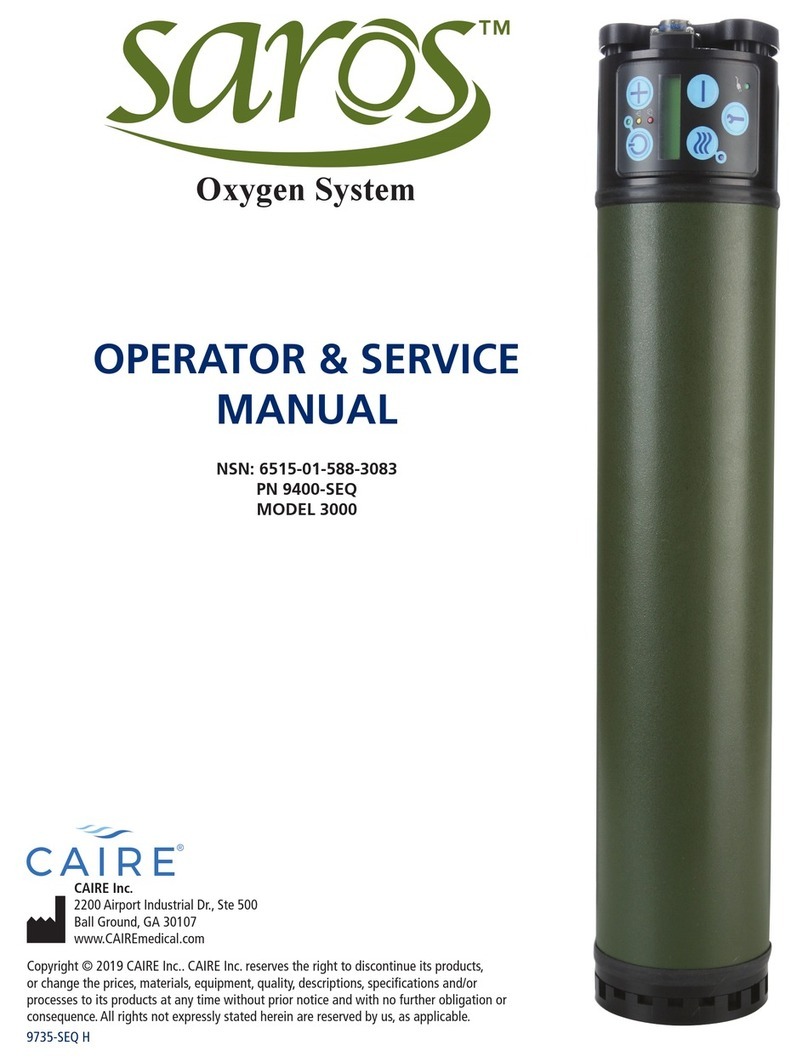
Operator Manual
4| MN255-1 C
TABLE OF CONTENTS
DEFINITION OF SYMBOLS PAGE / WARNING PAGE........................................................................................................2
ILLUSTRATIONS ................................................................................................................................................................5
TABLES ..............................................................................................................................................................................5
INDICATIONS FOR USE .....................................................................................................................................................6
INDICATIONS ....................................................................................................................................................................6
CONTRAINDICATIONS ......................................................................................................................................................7
SAFETY GUIDELINES ................................................................................................................................................ 7
BATTERY SAFETY ..................................................................................................................................................... 8
1.0 INTRODUCTION ..........................................................................................................................................................9
1.1 GENERAL INFORMATION................................................................................................................................... 9
1.2 SAROS OXYGEN SYSTEM SPECIFICATIONS ..................................................................................................... 10
2.0 INTRODUCTION TO YOUR SAROS OXYGEN SYSTEM ...........................................................................................13
2.1 DESCRIPTION OF THE SAROS ASSEMBLY—SHIPPABLE ................................................................................. 13
2.2 USER CONTROLS AND SYSTEM STATUS INDICATORS .................................................................................... 15
2.3 RECOMMENDED OPERATING ENVIRONMENTS ............................................................................................. 18
3.0 PREPARATION FOR USE AND INSTALLATION..........................................................................................................19
3.1 BATTERY INSTALLATION ONTO SAROS .......................................................................................................... 19
3.2 LOCATING THE SAROS..................................................................................................................................... 19
4.0 OPERATING INSTRUCTIONS .....................................................................................................................................20
4.1 OPERATING THE SAROS FOR THE FIRST TIME ................................................................................................ 23
5.0 OPERATOR MAINTENANCE & SERVICE ...................................................................................................................26
5.1 CLEANING THE SAROS .................................................................................................................................... 26
5.2 ROUTINE MAINTENANCE ............................................................................................................................... 26
5.3 CLEANING OR REPLACING AIR INLET FILTER.................................................................................................. 27
5.4 REPLACING THE HEPA FILTER.......................................................................................................................... 28
5.5 RUN DEVICE AND FULLY DRAIN SAROS BATTERY ......................................................................................... 29
5.6 REPLACING THE 9V BATTERY.......................................................................................................................... 29
6.0 ALERTS, ALARMS, AND TROUBLESHOOTING TABLE .............................................................................................29
6.1 SYSTEM TROUBLESHOOTING GUIDE.............................................................................................................. 30
6.2 ALARM INDICATIONS AND CODES ................................................................................................................. 31
7.0 REPROGRAMMING/CALIBRATION...........................................................................................................................33
8.0 SHIPPING AND TRANSPORTING THE SAROS ..........................................................................................................33
9.0 STORING AND DISCARDING THE SAROS ................................................................................................................33
10.0 EMC TESTING..........................................................................................................................................................34




























